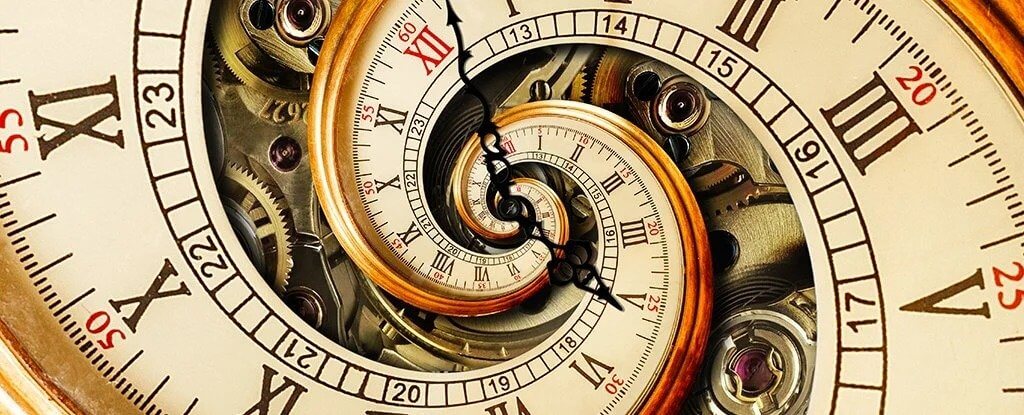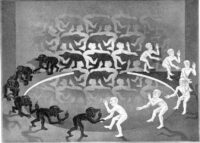Classical Buddhist cosmology places humanity within The Saha World system, a time-bound realm of endurance. “Endurance,” etymologically speaking, shares the same Pre-Indo-European word-root as “duration,” deru, (to be steadfast, firm, solid), associated interestingly, with trees and longevity. To endure is to exist over time, like a Giant Sequoia or Bristlecone Pine.
The nature of time itself remains a great mystery, but ever since the invention of the clock, human culture has progressively treated time as comprised of specific intervals – hours, minutes, seconds, milliseconds, and so on. In this way, modern civilization is a world-wide, clock-time culture, days and nights divided into discrete fragments of time within which our human lives are mechanistically ordered. The conception of time as mechanistic fits well with our tendency to predict what’s coming next, to observe the past and present as indicators of a likely future. Clock-time culture is a systemic model that predicts, but cannot command, a future that conforms well with the past. The actuality of non-clock time is greater than that, however: formless, open-ended, growing, constantly creative and largely unpredictable.
Despite our carefully reckoned countdown of Monday through Friday, it is not clock-time we endure but the deep and ever-present formless continuity of endless duration. Like a river, time flows at its own pace, and for a while, we each join the flow. Experientially, time flows according to how we place our attention; like a watched pot never coming to a boil on a hot stove, time flows more slowly when our attention is placed on it than when our attention is fully engaged with another activity. Time can “fly,” but this raises an obvious question: does time itself travel at a particular speed?
Einstein predicted that as our speed of acceleration increases time slows down, and experimentally his prediction has proved correct. Moreover, if we could reach the speed of light, says Einstein, time would appear to stop. At present, there’s no way to prove this, but it implies that the speed of time equals the speed of light, and if that’s true, it means that time-wise, everything in the universe exists at the speed of light. The speed of time is one indication of why actually moving backwards in time is impossible, except mathematically. The arrow of time moves one way only, forward. If time is moving at the speed of light, we’d have to greatly exceed that speed to move backwards in time, something Einstein said is impossible.
Einstein, however, viewed existence mechanistically. He described himself as a “determinist” and believed that the future is fully and irrevocably established by events of the past. His view left no room for the uncertainty of creativity, chance, or for that matter, the probabilistic indeterminacy of quantum mechanics, ie, “God playing dice with the universe.” It is within the quantum realm that the phenomenon of entanglement exceeds the speed of light, Einstein and his genius notwithstanding.
Duration is life itself; to be alive is to exist within time, to endure, to inhabit The Saha World. To be conscious of time speaks to how both time and consciousness share the attributes of change and creative freedom. Both consciousness and time are transformational, unconstrained, and constantly moving forward into the future. We may want to be “more in the now” but “now” is when we always are, a dimensionless point in time of no measurable duration, no matter what sayeth the clock on the wall.






Be First to Comment